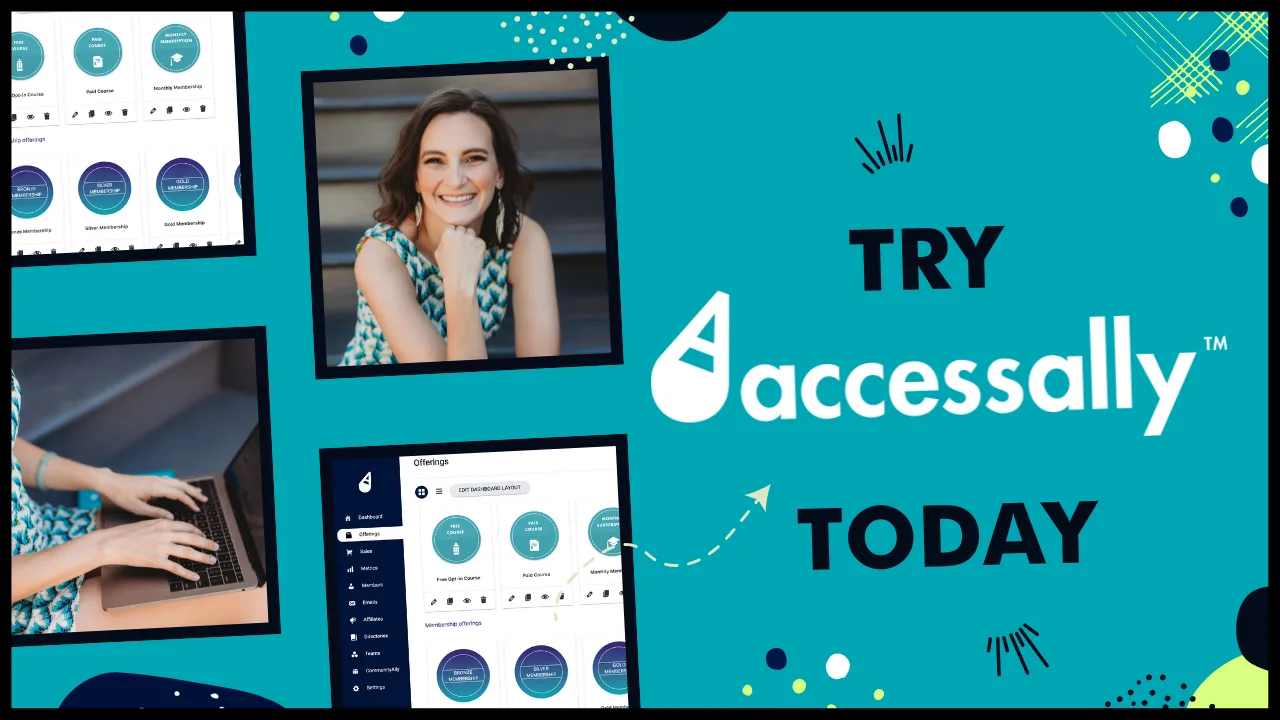Introduction and Overview
Creating an online course that students actually complete requires careful planning and intentional design from the very beginning. As someone who has helped hundreds of course creators develop their programs, I’ve seen firsthand how the right curriculum structure can make the difference between students thriving or dropping out.
Here’s the thing: even the most valuable content won’t serve your students if they don’t make it to the end. That’s why we need to approach curriculum design with both engagement and completion in mind. Think of your course like a well-planned journey – you want clear signposts, manageable steps, and enough momentum to keep moving forward.
The most successful courses I’ve seen share some key elements: they break complex topics into digestible modules, incorporate regular wins and momentum builders, and create clear connections between concepts. Your curriculum needs to feel both comprehensive and conquerable.
When building your course outline, start by getting crystal clear on your student’s desired transformation. What specific skills or outcomes will they achieve? Where are they starting from? This helps you map out the essential stepping stones they’ll need to reach their goal. Remember to consider both the logical progression of concepts and the emotional journey your students will experience.
I recently worked with a business coach who was struggling with high drop-off rates in her leadership course. By restructuring her curriculum to include more quick wins early on and breaking down complex modules into smaller chunks, she saw completion rates jump from 35% to over 80%. The content didn’t change – just how it was organized and presented.
In the following sections, we’ll explore exactly how to structure your curriculum for maximum engagement and completion, including practical templates and examples you can adapt for your own courses. Let’s create learning experiences that truly serve your students from start to finish.
Foundation Concepts and Planning
Before creating a course, let’s establish the core principles that will set your curriculum up for success. A well-structured foundation dramatically increases the likelihood that your students will complete your course and achieve their desired outcomes.
Start by deeply understanding your target student’s current situation and where they want to go. What specific transformation are they seeking? For example, suppose you’re teaching social media marketing. In that case, your students might be small business owners struggling with sporadic posting and want to develop a consistent, engaging presence that drives sales. This clear understanding helps you build a curriculum that speaks directly to their needs and motivations.
Next, map out the essential milestones your students need to reach to achieve their transformation. Think of these as the major chapters in your student’s journey. In our social media example, key milestones might include understanding platform algorithms, creating a content calendar, developing their brand voice, and mastering engagement strategies. Each milestone should build logically on previous concepts while moving students closer to their ultimate goal.
When planning the curriculum structure, consider your students’ available time and cognitive load. Most adult learners juggle multiple responsibilities, so break down complex topics into digestible chunks that can be completed in 15-30 minute sessions. This approach helps prevent overwhelm and maintain momentum.


Building comprehensive course curricula that drive completion – Professional course creation with AccessAlly
Engagement is crucial for course completion, so plan varied learning experiences throughout your curriculum. Mix video lessons with practical exercises, reflection prompts, and real-world applications. When students can immediately apply what they’re learning to their specific situation, they’re more likely to stay motivated and complete the course.
Don’t forget to build in quick wins early in the curriculum. When students experience success within the first few lessons, it builds confidence and creates positive momentum. For instance, having students set up and optimize one social media profile in the first module gives them a tangible accomplishment to celebrate.
Remember to leave room for community interaction in your curriculum design. Learning alongside peers increases accountability and provides valuable perspectives. Consider incorporating discussion prompts, peer feedback opportunities, or small group projects that foster connection while reinforcing course concepts.
With these foundational elements in place, you’ll be well-positioned to create a curriculum that not only delivers valuable content but also supports your students through successful completion.
Step-by-Step Implementation Guide
Here’s the thing – creating a curriculum that keeps students engaged through completion requires careful planning and strategic implementation. Let’s walk through exactly how to build your course structure for maximum student success.
Start by mapping out your course’s final destination. What specific transformation do you want your students to achieve? Write this down in clear, measurable terms. For example, instead of “learn photography,” your goal might be “confidently shoot in manual mode and capture professional-quality portraits in natural light.”
With your end goal defined, work backward to identify the crucial stepping stones your students need to reach that destination. Think about your own journey learning this skill – what foundational knowledge was essential? What common roadblocks did you encounter? This becomes the backbone of your module sequence.
Break each module into bite-sized lessons that build progressively. The key is to structure content to create quick wins early on while gradually increasing complexity. For instance, if you’re teaching social media marketing, start with setting up basic profiles before diving into advanced advertising strategies.
Now, let’s talk about implementation mechanics. Create clear transition points between lessons, explicitly showing students how each concept connects to the next. Include brief recaps at the start of each module to reinforce previous learning and preview upcoming material. This helps students understand where they’ve been and are going.
Consider adding checkpoint assessments throughout your curriculum. These are not formal tests – they can be simple action items like uploading a practice photo or writing a sample social media post. These checkpoints serve dual purposes: they help students apply what they’ve learned and give you valuable feedback on comprehension.
Pay special attention to your module pacing. While it’s tempting to pack in everything you know, resist that urge. Instead, focus on creating manageable chunks that students can complete in 15-30 minute sessions. This approach helps prevent overwhelm and makes it easier for busy students to maintain momentum.
Don’t forget to build in celebration moments. When students complete important milestones, acknowledge their progress. This could be through automated congratulatory messages, digital badges, or access to bonus content. These small victories help maintain motivation and create positive associations with learning.
Finally, include implementation time in your curriculum planning. After teaching new concepts, provide structured practice opportunities. Create worksheets, templates, or guided exercises that help students apply what they’ve learned to their specific situations. Remember that true learning happens through doing, not just consuming information.
By following this systematic approach to curriculum design, you’ll create a course that naturally guides students toward completion while ensuring they achieve their desired transformation. Your thoughtful structure becomes the invisible support system that keeps students engaged and moving forward.
Advanced Strategies and Techniques for Course Completion
Now that you’ve got the foundations in place, let’s explore some sophisticated approaches to boost your course completion rates. Here’s the thing: even the most brilliantly designed curriculum won’t succeed if students don’t finish.
Start by implementing progressive unlocking in your course structure, rather than overwhelming students with all content at once, release modules based on completion milestones. For example, require students to complete a reflection assignment before accessing the next section. This creates momentum while ensuring they’re actually absorbing the material.
Consider incorporating peer accountability through small study groups of 3-4 students. These “success pods” can meet virtually every two weeks to discuss their progress and challenges. I’ve seen completion rates increase by up to 40% when students have this built-in support system. You can facilitate these connections through platforms like Mighty Networks, which offers robust community features alongside course delivery.
Gamification is another powerful tool when used strategically. Design a points system that rewards consistent engagement – not just completion. Award bonus points for helping others in the community, submitting assignments early, or providing thoughtful feedback. Create a leaderboard to tap into healthy competition, but ensure it celebrates effort and collaboration rather than just speed.
Personalization makes a huge difference in student engagement. Set up automated check-in emails that trigger based on individual progress. If someone hasn’t logged in for a week, send them a warm reminder with a specific action step they can take. For students who are ahead of schedule, provide bonus challenges that deepen their learning.
Don’t forget the power of celebration milestones. Create special certificates or badges for completing key modules, and make these shareable on social media. Record personalized video congratulations for students who finish major projects. These moments of recognition help maintain motivation throughout the course journey.
Track completion patterns to identify where students typically get stuck. Use this data to proactively provide extra support at these points – whether through additional office hours, supplementary resources, or restructuring challenging sections. Remember that your curriculum should be a living document that evolves based on real student experiences and feedback.
Common Challenges and Solutions
Let’s tackle the roadblocks you might encounter when building your course curriculum, because knowing these challenges ahead of time helps you navigate them more smoothly. Here’s the thing: even experienced course creators face these hurdles, but with the right approach, you can overcome them.
One of the biggest challenges is overwhelming your students with too much content. It’s tempting to pour everything you know into your course, but this often leads to information overload and decreased completion rates. Instead, focus on creating clear learning pathways. Break complex topics into digestible chunks and ensure each module builds naturally on the previous one. Consider using a “milestone” system where students can celebrate small wins along the way.
Another common issue is maintaining student engagement throughout the course. To combat this, incorporate various learning styles into your curriculum. Mix written content with video lessons, add interactive elements like quizzes and worksheets, and include practical exercises that students can apply immediately. Creating opportunities for students to implement what they’re learning helps cement the knowledge and keeps them moving forward.
Technical barriers can also frustrate students and impact completion rates. Ensure your course platform is user-friendly and provide clear navigation instructions. Create a resource section with technical FAQs and consider offering a quick orientation module to help students familiarize themselves with your course environment.
Motivation often dips in the middle of courses, what I call the “middle module valley.” Combat this by building in accountability features like progress tracking and completion certificates. Consider adding community elements where students can support each other and share wins. You might also implement automated check-in emails to encourage students who haven’t logged in recently.
Remember to gather feedback regularly and be willing to adjust your curriculum based on student needs. Sometimes what seems crystal clear to you might need more explanation or restructuring for your students. Stay flexible and view your course as an evolving entity that grows stronger with each iteration.
Best Practices and Optimization
Let’s dive into the strategies that will help your course curriculum shine and keep students engaged through completion. Here’s the thing – even the most valuable content needs thoughtful presentation to maximize student success.
Start by establishing a consistent rhythm in your course structure. Each module should follow a similar pattern, making it easy for students to develop a learning routine. For example, begin modules with a clear overview video, follow with detailed lesson content, and wrap up with an actionable assignment. This predictable flow helps students know what to expect and builds momentum.
Consider the cognitive load on your students when organizing content. Break complex topics into digestible chunks of 5-15 minutes for videos and keep text lessons focused on single concepts. According to research from Mighty Networks, courses with bite-sized content see up to 30% higher completion rates than those with lengthy lessons.
Engagement is crucial for course completion, so build in regular touchpoints. Include quick knowledge checks after key concepts, encourage students to share their progress in a community space, and celebrate their small wins. Consider adding peer learning elements like discussion prompts or partner exercises – these social components can significantly boost motivation.
Make your curriculum adaptive to different learning styles. Supplement video lessons with written transcripts, provide downloadable resources for hands-on learners, and include both visual and text-based examples. This flexibility ensures every student can engage with the material in their preferred way.
Monitor student progress and gather feedback continuously. Track which lessons see the highest engagement and which ones tend to lose students. Use this data to refine your curriculum – perhaps breaking down challenging sections or adding more examples where students commonly get stuck.
Remember to maintain an encouraging tone throughout your course materials. Frame challenges as opportunities for growth, provide plenty of support resources, and remind students of their progress. When students feel supported and see their advancement, they’re much more likely to persist through completion.
Case Studies and Examples: Learning from Real Course Success Stories
Let me share some inspiring examples of course creators who transformed their completion rates by reimagining their curriculum structure. Here’s the thing – seeing how others have succeeded can help us identify practical strategies we can adapt for our own courses.
Take Sarah, a business coach who initially struggled with a 23% completion rate in her flagship program. By restructuring her 12-week course into three distinct modules with clear milestone celebrations, she saw completion jump to 68%. The key was creating natural momentum – each module built confidence before tackling more advanced concepts.
Another fantastic example comes from Marcus, a photography instructor who teaches both beginners and pros. His original course was comprehensive but overwhelming, covering everything from camera basics to advanced editing. After splitting it into three progressive courses (Foundations, Intermediate, and Advanced), with each requiring completion of the previous level, his student success metrics soared. Not only did completion rates increase to 72%, but students reported feeling more confident and accomplished.
I worked with a yoga teacher named Amy who faced a common challenge – students skipping ahead to advanced poses before mastering the basics. She redesigned her curriculum to include mandatory “checkpoint” videos where students demonstrated fundamental poses before unlocking more complex sequences. This gamification approach increased engagement while ensuring student safety and proper skill progression.
Consider also the case of Tech Academy, an online coding bootcamp. They implemented a unique “buddy system” where students were paired up to review each other’s projects at specific curriculum milestones. This peer accountability led to an impressive 82% completion rate, up from their previous 45%.
What these success stories share is a thoughtful approach to curriculum design that considers both learning psychology and student motivation. They demonstrate how breaking content into digestible chunks, creating clear progression paths, and building in accountability can dramatically impact completion rates.
Remember that your course structure should reflect your unique teaching style and subject matter. These examples aren’t meant to be copied exactly, but rather to inspire you to think creatively about how you can apply similar principles to your own curriculum design. The most successful courses find ways to balance comprehensive content with an engaging, achievable learning journey.
Future Considerations and Conclusion
As you continue developing your course curriculum, remember that the online education landscape is constantly evolving. Here’s the thing: what works perfectly today might need adjustment tomorrow as your students’ needs and technology capabilities change. Stay open to gathering feedback and making iterative improvements to your course structure.
Consider implementing advanced features as your course grows. You might want to explore gamification elements that reward progress, or adaptive learning paths that adjust based on student performance. Think about how you could incorporate emerging technologies like AI-powered tutoring or virtual reality demonstrations when they become more accessible and relevant to your subject matter.
Always keep scalability in mind. Your initial course might start with 20 students, but design your curriculum framework so it can effectively serve 200 or 2,000 learners. This means creating systems for automated feedback, peer learning communities, and clear self-service resources that reduce your direct involvement while maintaining high educational value.
The key is to maintain a balance between structure and flexibility. While your curriculum should provide a clear roadmap, build in enough adaptability to accommodate different learning styles and paces. Consider offering multiple formats for key concepts – video, text, audio, and interactive elements – so students can engage with the material in ways that work best for them.
Most importantly, never lose sight of your ultimate goal: student success. Every decision about your curriculum should tie back to helping your learners achieve their desired outcomes. Regular check-ins, progress tracking, and celebration of milestones will help maintain motivation and drive completion rates higher.
By thoughtfully planning your curriculum with these elements in mind, you’re creating more than just a course – you’re building a transformative learning experience that will continue to evolve and improve over time, serving your students better with each iteration.




